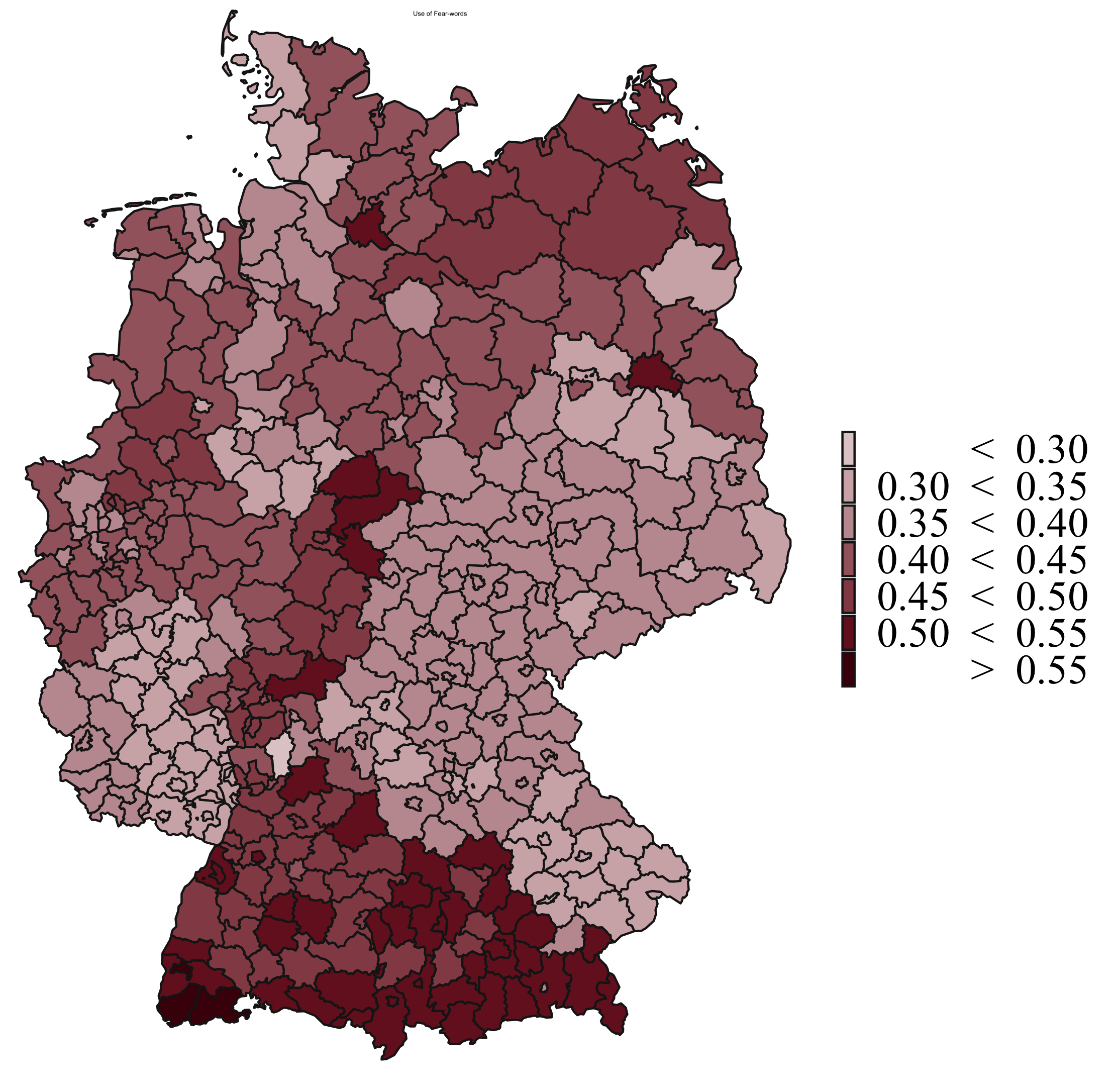
Why are people in some places more willing to reduce their chances of getting COVID19? Our new study (with Burcu Ozgün), published before Christmas in RegionalStudies, explores the role of regional media coverage. Utilizing a novel database on regionalized news (NUTS3) for Germany, our study links COVID news’ frequency and scariness to changes in people’s daily mobility between March 2020 and February 2022, controlling for actual infection numbers, policy responses, and COVID wave. We find regions to vary significantly in how the local news media covered COVID19, especially at the beginning of the pandemic, which the map visualizes with respect to the percentage of fear-related words showing up in COVID19 news during the first week of the pandemic. More frequent and more dramatic (scary) news on COVID19 is generally found to be associated with larger reductions in daily mobility. Crucially, the relationship between regional news and mobility patterns proved to be not constant and changed over the course of the pandemic. COVID news was particularly impactful in the early phase of the pandemic and when the new Omicron variant emerged. Hence, for researchers, our study implies that the spatial diffusion of COVID19 cannot be understood without considering regional news. Policy implications are less straightforward, as its control over the media is (fortunately) limited. However, monitoring, facilitating media diversity, contributing to the presentation of evidence-based insights, and supporting more research on regional news are recommendations.
